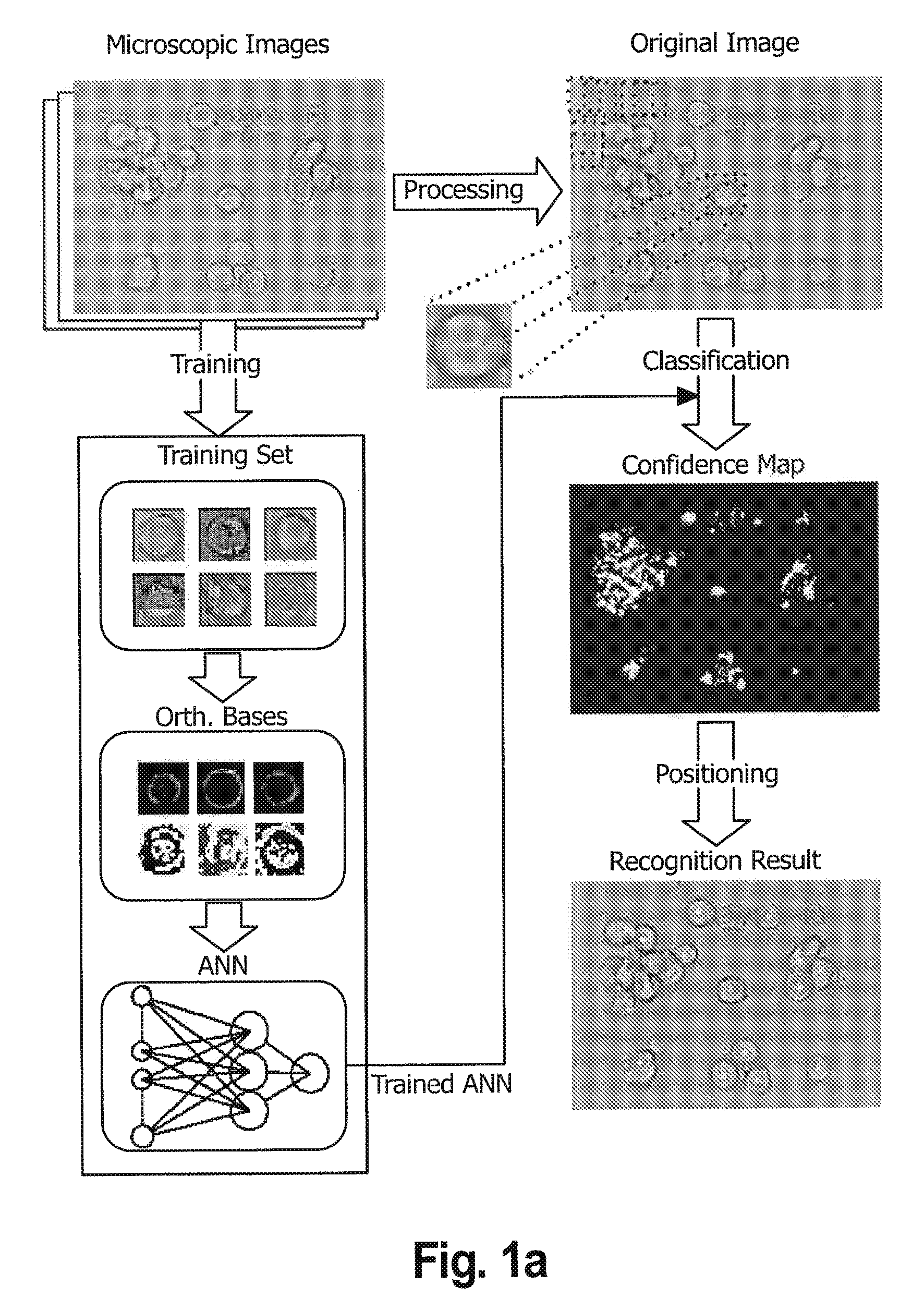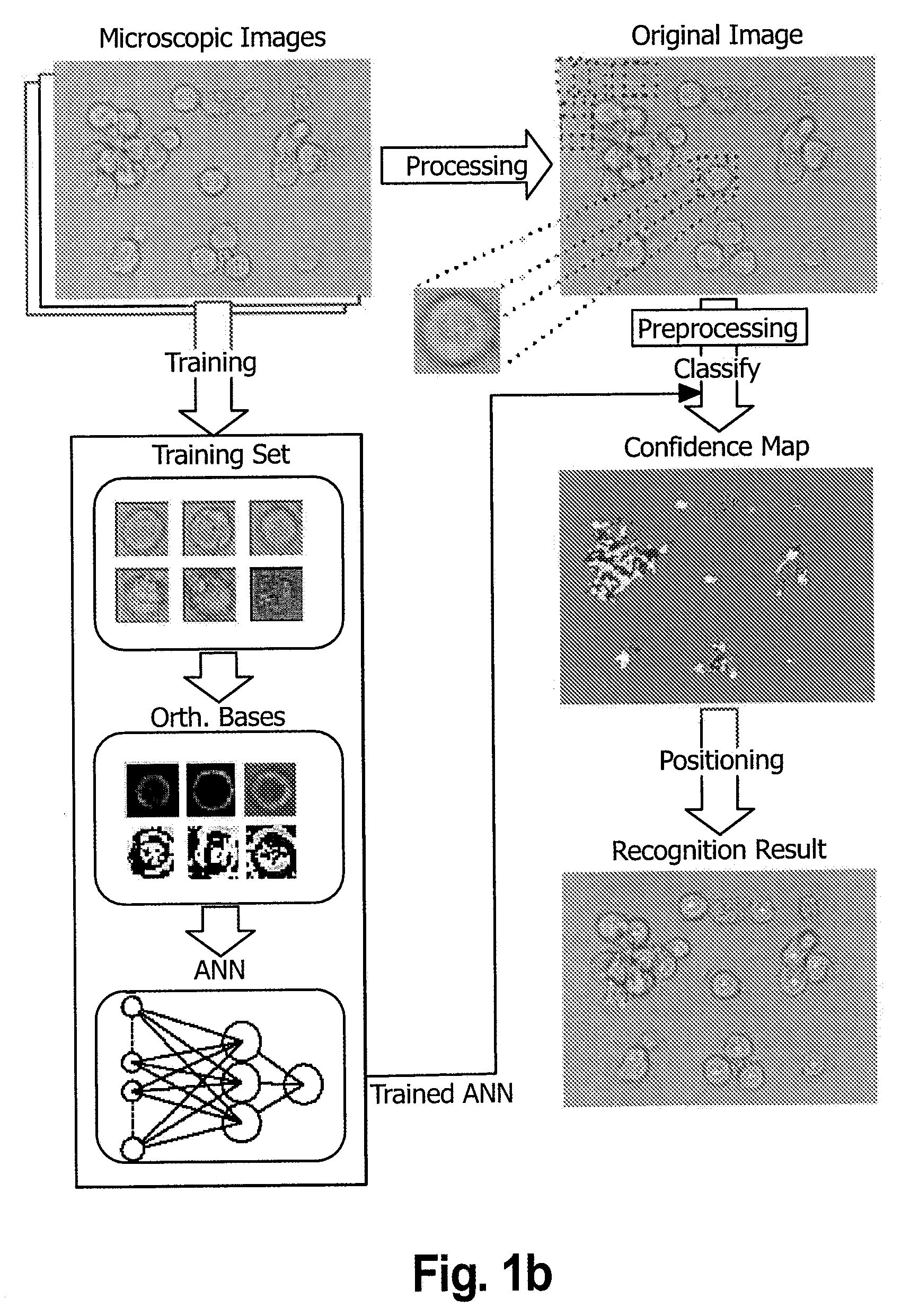Methods and systems for identifying and localizing objects based on features of the objects that are mapped to a vector
a vector and feature technology, applied in the field of pattern recognition systems, can solve the problems of inability to recognize subtle differences in appearance, inability to detect cells in bright field microscopy, and inherently difficult tasks, so as to improve detection and improve identification accuracy.
- Summary
- Abstract
- Description
- Claims
- Application Information
AI Technical Summary
Benefits of technology
Problems solved by technology
Method used
Image
Examples
examples
[0170]In one embodiment the ANN is optimized using an empirical method to determine an upper bound for each layer of the network. Then the optimal number of neurons in the two hidden layers are estimated by independently decreasing the number of hidden neurons in each layer from the upper bound to 1, and evaluating the generalization properties of the ANN on the test set at each step. To avoid entrapment in a local error minimum, every training session is repeated five times and the best weights were used for each number of hidden neurons.
[0171]FIG. 4 illustrates the generalization properties of the ANN for different numbers of neurons in the first layer, while keeping the size of the second hidden layer constant at five neurons. The mean squared error (the difference between the actual output and the desired output for the samples in the test set) is plotted versus the number of neurons. The error rate improved as the number of hidden neurons was increased, but leveled out at aroun...
PUM
 Login to View More
Login to View More Abstract
Description
Claims
Application Information
 Login to View More
Login to View More - R&D
- Intellectual Property
- Life Sciences
- Materials
- Tech Scout
- Unparalleled Data Quality
- Higher Quality Content
- 60% Fewer Hallucinations
Browse by: Latest US Patents, China's latest patents, Technical Efficacy Thesaurus, Application Domain, Technology Topic, Popular Technical Reports.
© 2025 PatSnap. All rights reserved.Legal|Privacy policy|Modern Slavery Act Transparency Statement|Sitemap|About US| Contact US: help@patsnap.com



